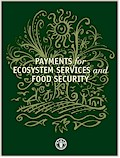| Book Chapter |
 |
|
| Title | Rubber agroforestry and PES for preservation of biodiversity in Bungo district, Sumatra | | Author | Laxman Joshi, Rachman Pasha, Elok Mulyoutami and Hendrien J Beukema | | Editors | Daniela Ottaviani and Nadia El-Hage Scialabba | | Year | 2011 | | Book Title | Payments for ecosystem services and food security | | Publisher | FAO | | City of Publication | Rome, Italy | | Number of Pages of the book | 26 | | Pages | 114-135 | | Phisical Description (illustration, index) | ISBN 978-92-5-106796-3 | | Call Number | BC0315-11 |
|
| Abstract: |
| The introduction of the rubber tree (Hevea brasiliensis), naturally found in the floodplains forests along the Amazon River, began in Indonesia in the second half of the 19th century. In Sumatra and Borneo, rubber cultivation, initially restricted along rivers with good accessibility, rapidly spread to even relatively remote areas in the country. Currently, Indonesia is the world's second largest gum exporter with an overall rubber area of 3.5 million hectares. More than one million households depend on rubber-generating income in Indonesia, as 83 percent of the rubber cultivation area is constituted by smallholder rubber agroforestry systems (Wibawa et al., 2005)
Bungo district, located in the western area of the Jambi province, the third most important Indonesia province for rubber production, is surrounded by three national parks: Kerinci Seblat, Bukit Dua Belas and Bukit Tiga Puluh. The district has been severely deforested (60 percent forest loss) and forests have been replaced by rubber and oil palm plantations, as well as other agricultural land uses. In particular, from the late 1980s, an increased spread in oil plantation cultivation has led to the additional loss of native trees and simplification of the agro-ecological landscape (Fentreine et al.). A remote sensing study showed that in 1998 the remaining forests, mostly located on the Barisan range, covered only 28 percent of Bungo district, while in the area occupied by jungle rubber has decreased from 17 percent (1988) to 11 percent (2008) due to a parallel increase in monoculture covering from 23 percent (1988) to 49 percent (2008) of the district area (Ekadinata et al., 2010) |
|